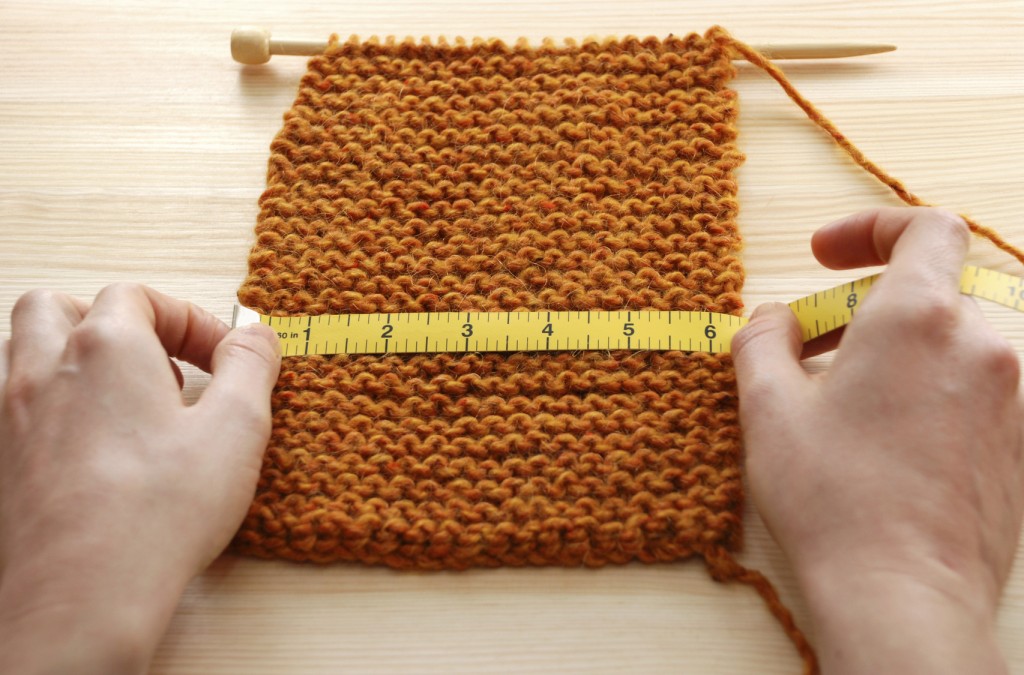
Hi Brooke,
Some of my favorite fibers to knit with are silk, bamboo, and cotton, but these beautiful yarns have bad memories. They can provide lustrous sheen and magnificent drape to any garment or accessory, but they do not have the natural elasticity or “memory” of wool. This means they just won’t hold their shape over
Hi Brooke,
Some of my favorite fibers to knit with are silk, bamboo, and cotton, but these beautiful yarns have bad memories. They can provide lustrous sheen and magnificent drape to any garment or accessory, but they do not have the natural elasticity or “memory” of wool. This means they just won’t hold their shape over the long run. The unpleasant result can be a garments designed to stop at the hip which stretch down to the knees after being worn a few times. So before making a project with one of these yarns, you’ll want to know exactly how much it will stretch out with wear. Taking the right kind of gauge measurement is the key.
Measuring a Flat Gauge Isn’t Enough
If you want to minimize unpleasant surprises at the end of your project, accurate gauge measurements are absolutely required. But sometimes a standard measurement isn’t sufficient. If you’re working a yarn with bad memory like silk, cotton, or bamboo it is important to know how gravity will come into play. Your sweater, shawl or skirt will hang vertical your body which means gravity will pull on it. You need to allow gravity to act on your swatch in the same fashion.
Here’s the procedure: After knitting a large swatch (8” x 8” or larger) wash and block it as you normally would, then hang it up for 24 hours or at least overnight. You may even want to weigh the swatch down by clipping a few clothes pins to the bottom edge to get a really good approximation of how much it will stretch with gravity. Once the swatch has been allowed to stretch, use a ruler to measure the number of stitches and rows per inch while the swatch is still hanging vertically. This is crucial because measuring the swatch while it is lying on a flat surface simply won’t give you correct information.
Let the Next Swatch be Hanged!
Don’t be intimidated by the idea of taking a hanging gauge. Use this technique on your next silk, cotton, or bamboo project to get accurate numbers and prevent surprise stretching. Hanging gauge measurements will guarantee that your finished garment will wear and fit better for years to come.

